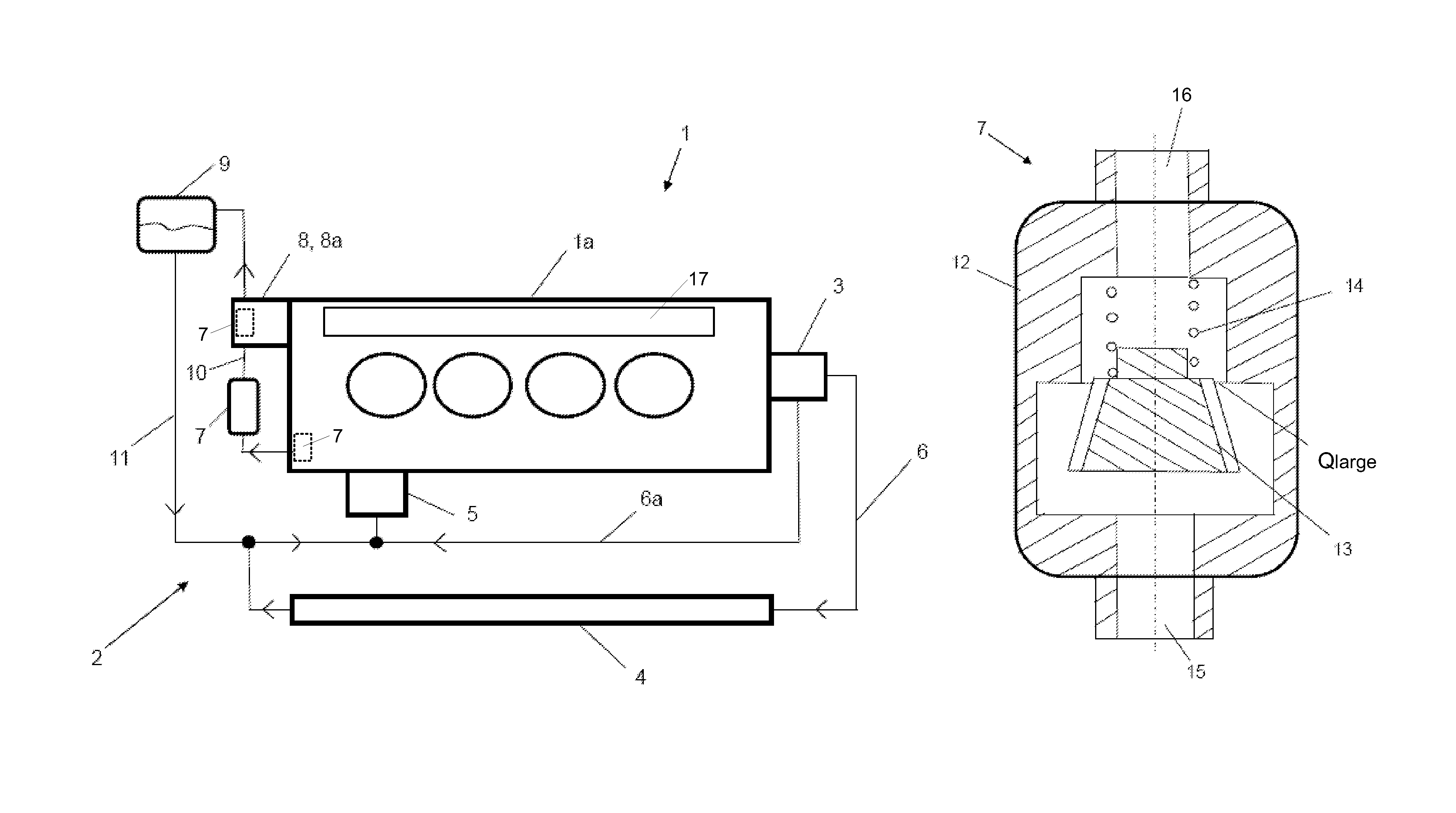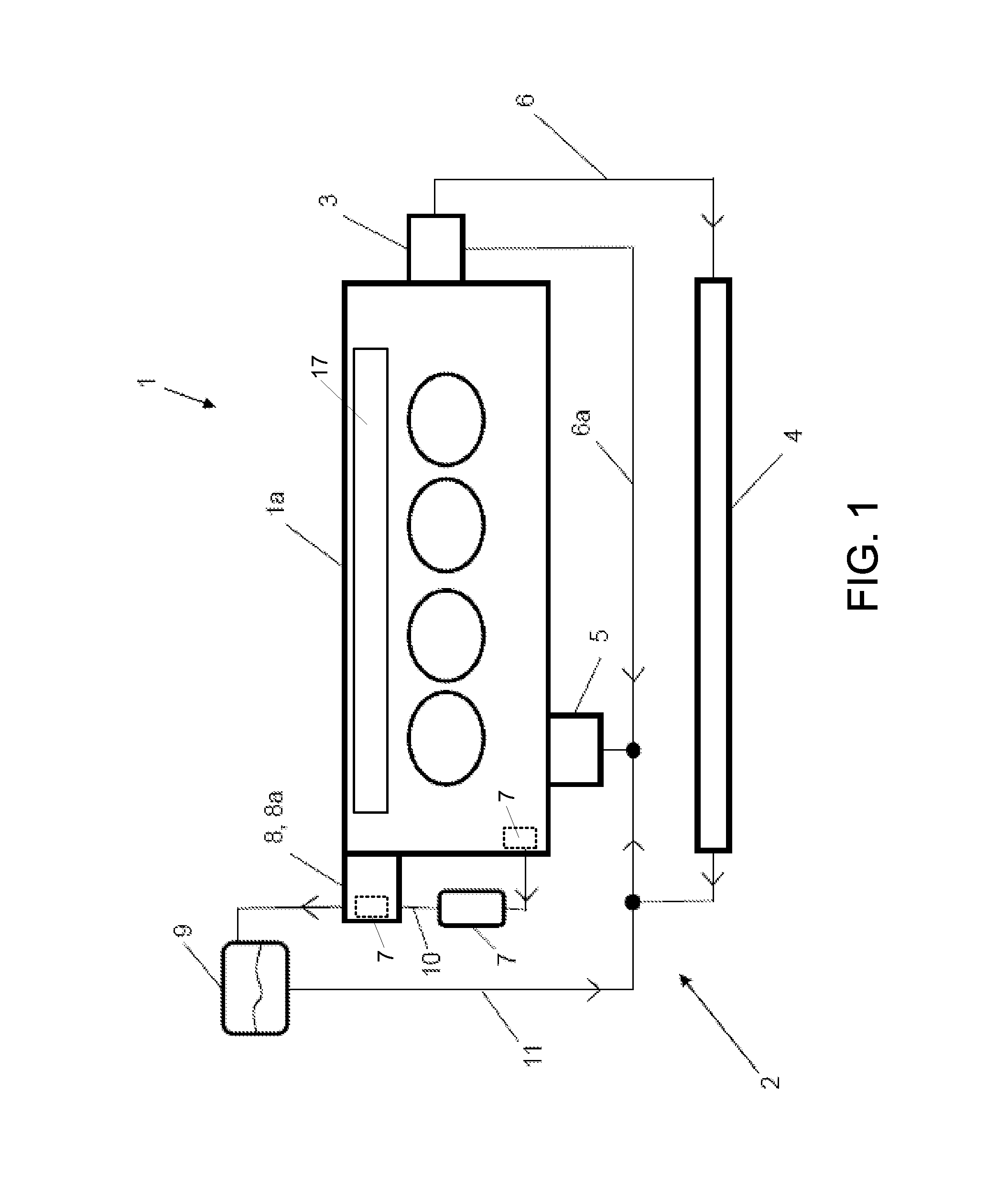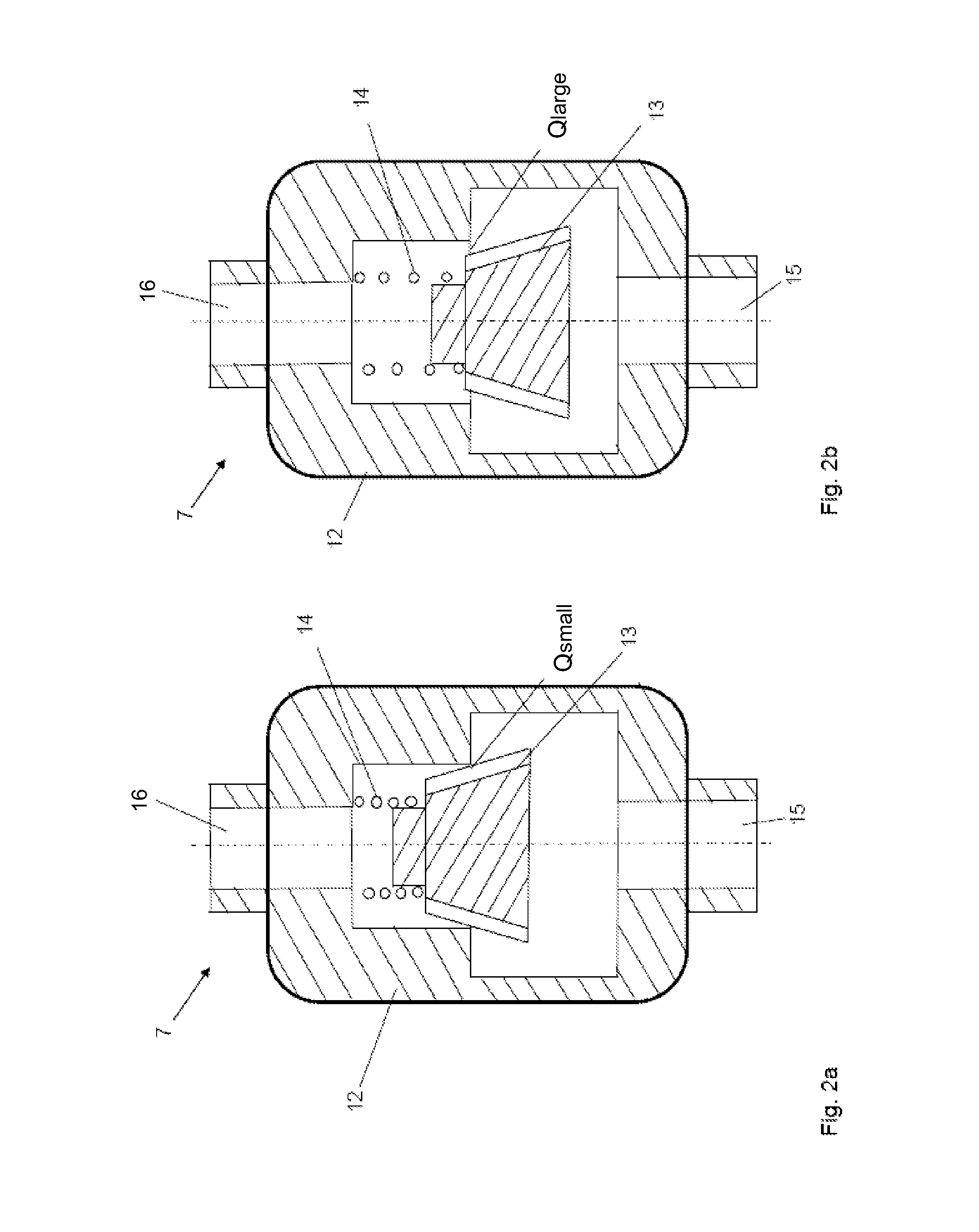Liquid-cooled internal combustion engine with afterrun cooling, and method for operating an internal combustion engine of said type
a liquid-cooled internal combustion engine and after-run cooling technology, which is applied in the direction of engine cooling apparatus, failure safe, cylinders, etc., can solve the problems of first weakened strength of mechanical and thermally high-loaded cylinder heads or blocks, heat not first conducted to the surface, and proved problems, so as to prevent irreversible damage
- Summary
- Abstract
- Description
- Claims
- Application Information
AI Technical Summary
Benefits of technology
Problems solved by technology
Method used
Image
Examples
Embodiment Construction
[0033]In order to provide coolant to an engine component on demand, even after shut down of the engine, a pressure-sensitive valve may be arranged between a coolant pump and the engine component to be cooled. Coolant may flow from the pump to the valve and the component during pump operation. Then, after the engine is shut down and the pump operation ceases, coolant may continue to flow due to the thermosiphon effect. The valve may move to a position having an increased cross-section during operation with low coolant pressure in order to provide an adequate amount of coolant to the engine component. The valve may be positioned in a connecting line of a cooling circuit of an engine upstream of a ventilation vessel.
[0034]The valve is arranged in the connecting line, wherein within the context of the present disclosure, the entire line section between the pump and the ventilation vessel is referred to as a connecting line, specifically regardless of whether the line leads through other...
PUM
 Login to View More
Login to View More Abstract
Description
Claims
Application Information
 Login to View More
Login to View More - R&D
- Intellectual Property
- Life Sciences
- Materials
- Tech Scout
- Unparalleled Data Quality
- Higher Quality Content
- 60% Fewer Hallucinations
Browse by: Latest US Patents, China's latest patents, Technical Efficacy Thesaurus, Application Domain, Technology Topic, Popular Technical Reports.
© 2025 PatSnap. All rights reserved.Legal|Privacy policy|Modern Slavery Act Transparency Statement|Sitemap|About US| Contact US: help@patsnap.com



